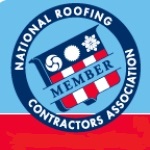Hicksville Roofing: Article About Winterizing Commercial Roofs
Often used for roofs surrounded by parapet walls or buildings with railed rooftops, scuppers allow water to drain out without pooling on the roof. The scupper drains are installed at low points along parapet walls or near drip edges and are connected to downspouts. Sometimes, secondary scuppers are installed at higher points along outer walls for extra emergency drainage.
Question answered for our Hicksville roofing customers: What causes the most winter damage to commercial or flat roofs?Unfortunately, the local region's winter elements can be damaging to roofs. Severe rain storms, extreme winds and occasional freezing temperatures all can harm commercial roofs. In colder climates, ice damming and snow build-up cause significant destruction. In the Southeast where climates are warmer, winter and spring wind storms and tornadoes can cause serious damage, as can large hail storms.

Preparing your commercial roof to successfully survive winter may seem unnecessary with the region's relatively short winters, but a little rain, a string of freezing nights and a smattering of snow can wreak havoc on an ill-prepared flat roof. Fortunately, there are steps you can take to ensure that your roof is ready for winter, whether it brings more snow than usual, high winds or just the occasional downpour of rain.
Your Hicksville roofing contractor may offer a winterizing service or will include winterizing activities during regularly scheduled maintenance checks. But, if your area has experienced a good deal of unusual winter activity since your last maintenance check, it's a good idea to have your facilities manager run through a winter checklist again.
Please note that roofs can be dangerous even in good weather, and they are even more so during winter. Always use proper safety gear and caution, or call a professional roofer to conduct your extra winter maintenance checks.
Ensuring that your roof is ready for winter weather actually begins on the ground. Whether your business is downtown and surrounded by water oaks or in an outlying area with a troubling spot of kudzu, your landscaping may present some hazards to your roof in winter weather. Walk around your property, noting trees, bushes and vines that may be able to reach your rooftop over the next six months. Trim back tall bushes and climbing vines, and prune branches and twigs that could fall onto your roof.
Have a question regarding siding repairs or TPO roofing? Ask Long Island Roofing of Hicksville NY.
Next, clear the roof surface, scuppers, gutters and drains of any debris. If you are having a particularly wild winter, this may need to be done a couple of times throughout the season to make sure that water continues to flow quickly and cleanly off your roof.
Also, check roof seams, edges and flashing to confirm that everything is intact. Some single-ply roof membranes can have weak seams that become challenged during winter's heavy storms and cold temperatures. Check that fastenings and adhesives are securely holding flashing and other components in place.
Inspect the roof surface for cracks, buckles, punctures and tears. While the local climate is normally fairly mild, there are a fair number of winter nights that reach freezing temperatures. If there is any moisture in those tears or cracks, it can freeze at night and expand, causing bigger damage. That's compounded when the temperature warms during the day, only to re-freeze again at night. This freezing, thawing and re-freezing cycle can cause small problems to worsen, so being on top of any roof irregularities can save significant damage and money in the long run.
Winterizing your roof should really just be part of your regular fall roof maintenance. As with many things, a little preventive attention can head off bigger problems and set your business up for a safe winter season.









